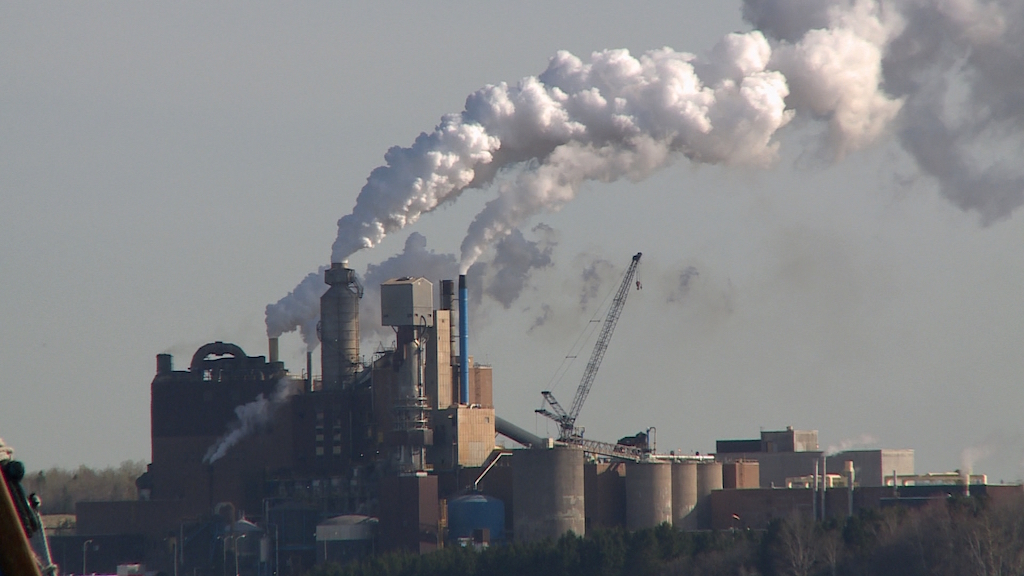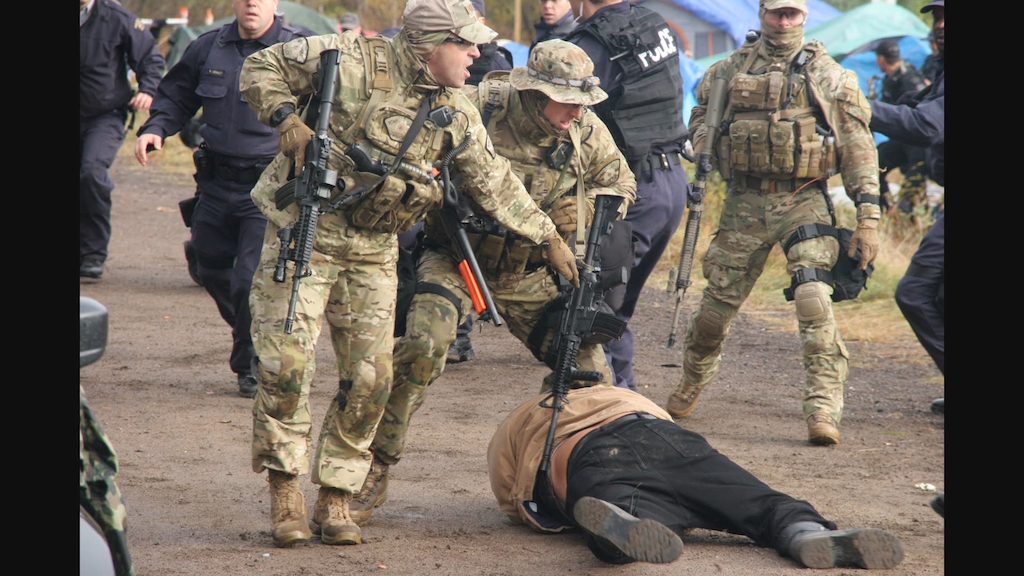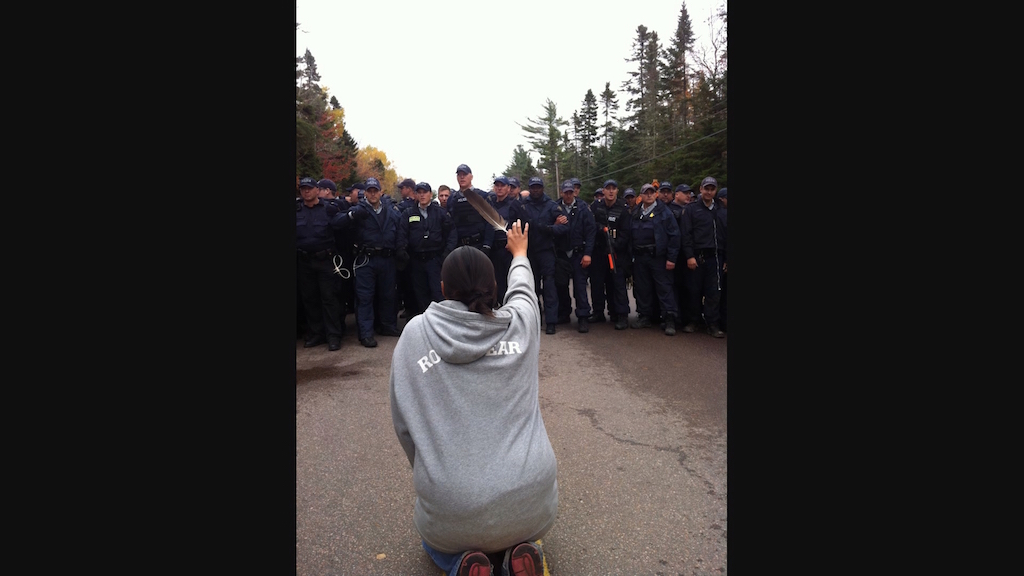Like this article? rabble is reader-supported journalism. Chip in to keep stories like these coming.
It’s remarkable to learn all the information that the Canadian documentary Defenders of the Dawn manages to insert into its 45-minute length.
As a Canadian, it’s shocking to learn that we do not have a guaranteed right to clean water, air or pure food, and, in fact, residents of places such as Ecuador, the Philippines and Argentina have fought for and secured those rights.
“It’s not just our land, our water — it’s sacred to everybody,” declares a First Nations activist in New Brunswick in the film.
The TV documentary, produced and narrated by distinguished Canadian writer/broadcaster Silver Donald Cameron, examines the fight in the Maritimes for those rights, situated within the perspective of the world stage.
I discover along the way that 177 out of 190 member countries at the United Nations recognize environmental rights, with the exception of nations like Oman, the U.S., China, North Korea and Canada. Incredible.
The film examines three key battlegrounds in the Maritimes: a contaminated landfill site near Halifax where homeowners couldn’t sell their houses and had to declare bankruptcy, the pulp mill that dumps millions of tonnes of effluent into the river in Pictou, N.S., and the incredible hard-fought fight in Elsipogtog, N.B., where an American company was granted a lease to frack.
The Pictou Landing story is indeed a tale for all Canadians to consider. The Northern Pulp mill disgorges 77 million litres of drudge a day into the town’s river. In addition, residents have had to put up with dirty air since the mill’s precipitator — equipment designed to reduce emissions at the mill — conked out almost 10 years ago. It was finally replaced in May.
‘Kiss of death’
What used to be a picturesque tourist town is turning into a ghost of itself, populated by empty business fronts.
“It’s no longer the smell of money,” noted one of the town’s innkeepers. “It’s the kiss of death.”
But the effluent is still flowing — called a “witch’s brew of heavy chemicals and waste” by a local First Nations activist.

Image: Defenders of the Dawn
Nothing seems to be moving on this issue. In fact, according to the film, Northern Pulp is listed as one of the top five polluters in the country by Environment Canada.
In late August this year, the mill was charged under Environment Canada’s Fisheries Act with releasing pulp and paper effluent into water inhabited by fish due to a leak in a pipe in June 2014.
What’s alarming besides the heavy polluting going on is that Canada stands among a minority of countries that don’t provide environmental rights.
The filmmakers head off to places such as the Philippines, Ecuador and Argentina to show how those countries deal with their environmental problems.
In Buenos Aires, the city’s 800-kilometre river was a dumping ground for industry, locals and farmers for 200 years until a group of activists decided to fight for a clean river under what is known as the Mendoza Case.
As a result, the court ruled that government and industry were required to improve the river’s conditions, and an organization — overseen by a citizen’s council and a judge — was created to remove the pollution, clean landfills near the river and install proper sewage systems to shantytowns along the river.
There are now 250 inspectors just for the river — that is more than all of the inspectors Environment Canada has for our country.
Fracking fight
The film ends with its most compelling story — the one from New Brunswick. If there was one thing I would have liked to see more of in the film, it would be the Elsipogtog battle prominently introduced as a thread at the start, middle and end of the documentary. The footage and the stories from the 2013 battle of residents vs. the police was riveting.

Image: Defenders of the Dawn
French, English and First Nations people united in what can only be described as a soul-warming front to put a stop to the fracking of a 2.5-million acre piece of prime land in Inverness County.
The coalition involved health workers, parents, educators and a whole lot of seniors and Aboriginal people who spent days outside trying to block trucks.
It wasn’t pretty.
“I saw a policeman go to this old lady sitting front of a truck and, bam! He hit her. That’s when I lost it,” said one First Nations activist.
There were some violent RCMP police actions and one night when the temporary settlement of activists was burned to the ground.
You may recall images from this protest. In fact, rabble.ca’s 2014 Year of Living Consciously anthology uses a version of the image of an Aboriginal protester holding a feather up against a phalanx of officers for its cover.
The fight is a phenomenal story of a citizen’s protest that went right. Eventually, the province’s new government put a moratorium on fracking. The Texas company given the lease gave up and went home.
More than 60 communities now across Canada have environmental rights edicts — that covers about five million Canadians. The battle continues.
You can find out more about Silver Donald Cameron’s GreenRights project here.
June Chua is a Berlin-based journalist who regularly writes about the arts for rabble.ca.
Like this article? rabble is reader-supported journalism. Chip in to keep stories like these coming.




